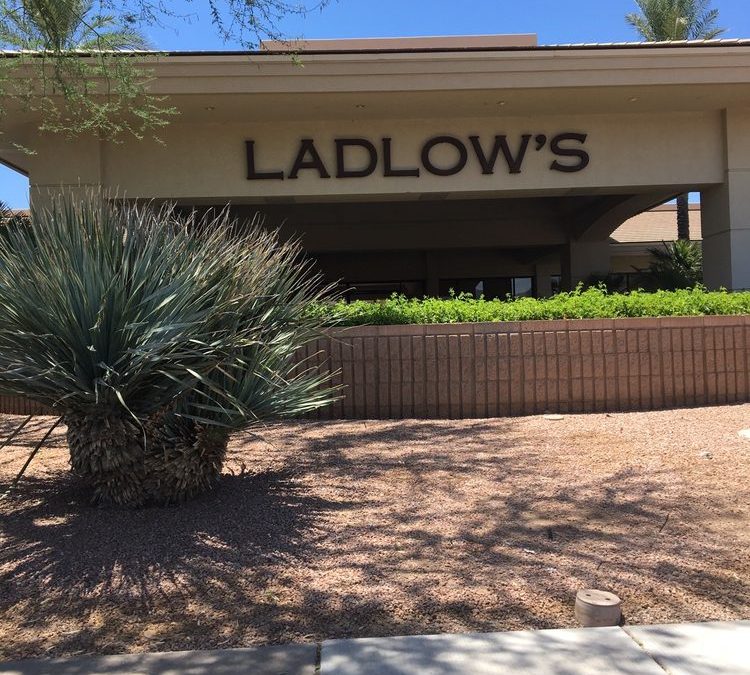Farewell To Ladlow’s
Dan Roark retires and reflects on 50 years in the furniture market.
By Nora Burba Trulsson
Dan Roark strides past sofas, consoles, lamps and beds to talk to a customer looking for a nightstand at his clearance store in north Phoenix. “I haven’t waited on anyone since 1977,” says Roark with a laugh, “so this is going to be a new experience.” Roark is in the last weeks of selling off inventory from his Ladlow’s furniture store, a retail business he has owned and operated since 1976. He’s retiring, closing up shop. Roark’s departure from the furniture business marks the end of an era in the Valley—except for Copenhagen, Ladlow’s is the last of the local, family-owned, upscale furniture stores in town.
At first glance, Roark’s background didn’t portend a career in predicting furniture trends and design styles. He studied accounting and economics at Montana State University, then moved to Phoenix to go into banking. “I was a commercial loan officer at Valley National Bank, at the main branch on Central Avenue,” Roark remembers. “I made loans to big customers.” In the early 1970s, one of those customers was the Lou Regester furniture company, which had four stores at one time. Charles Regester, son of founder Lou Regester, asked Roark to come work for him as the financial vice president. “I found I liked being around the merchandise,” Roark says, “and the main store was beautiful.” (That store, on Camelback Road, was designed by architect Ralph Haver and now houses one of the Copenhagen locations.)
Becoming more enamored with the merchandise-buying side of the business, Roark jumped ship and went to Mehagian’s Fine Furniture, where owner Art Mehagian had expanded his family’s oriental rug business into a complete furnishings store, which also featured a large commercial and residential interior design studio. With Art Mehagian as his mentor, Roark put his finance background to work, helping develop the corner of Lincoln Drive and Scottsdale Road into a shopping destination in the mid-70s, with Mehagian’s as the anchor store.
Roark soon found he didn’t quite have enough to do and learned that Earl and Margaret Ladlow were selling their Ladlow’s furniture store in Phoenix. “I knew how Lou Regester and Mehagian’s operated,” says Roark. “I also know how Barrows (another locally owned furniture store) operated. I figured I could make Ladlow’s work.”
In 1976, with Art Mehagian’s blessing, Roark bought Ladlow’s, a business founded by Earl and Margaret in the 1950s with a storefront near 40th Street and Thomas Road in Phoenix. “At the time, they were selling gold and brown velvet swivel rockers,” recalls Roark. “They had one salesperson and used two students from ASU to deliver furniture from the back of a pickup truck. The first day I owned it, we had no customers. I went home and thought I’d made a terrible mistake.”
But with luck, talent and grit, Roark made a success of the business, moving the store several times to different locations in Phoenix and Scottsdale before landing in a freestanding, 78,000-square-foot location with a warehouse in 2000, in a primo spot on Scottsdale Road, just south of Bell. “At one time, we had up to 100 employees, including designers, at that location,” he remembers. “We designed and built the store ourselves, and we carried lines like Henredon, Bernhardt and Lexington.”
Roark traveled to furniture markets several times a year, making sure Ladlow’s furniture offerings met the market needs, leaning on experience and instinct. “When I look at old photos from the early 2000s, our store is filled with traditional and Old World pieces,” he says. “That’s what everyone wanted at the time. In recent years, we’d been offering a lot of soft contemporary.”
Though he’d contemplated retirement for several years, it wasn’t until he got a “crazy” offer for the Scottsdale Road location that hanging up the swatches became a reality. Roark closed the store in September 2022, and it was torn down to make room for luxury apartments. Roark leased an empty Bed, Bath and Beyond location at Tatum and Shea to sell off the last of his merchandise, running a retirement sale for some 16 months.
“It was time to close,” he says. “The furniture landscape has changed so much with the internet and chain stores. I can name 25 stores from back in the day that are gone. Except for Copenhagen, we’ve all folded our tents and gone home.”
As Roark sells off the last of Ladlow’s armchairs and coffee tables in the increasingly empty clearance store, he pauses to reflect. “We were lucky back then. It was a Baby Boomer market, and they had the spending power. We spoke a different language than the kids today.”

